This video is a compilation of ideas at the start of the design process. The Lower Ninth Ward is in an unique position in regards to water and water management. The focus of Segment 12 going forward will be all around water and how the Lower Ninth Ward can live with water.
Site Visit: New Orleans, LA
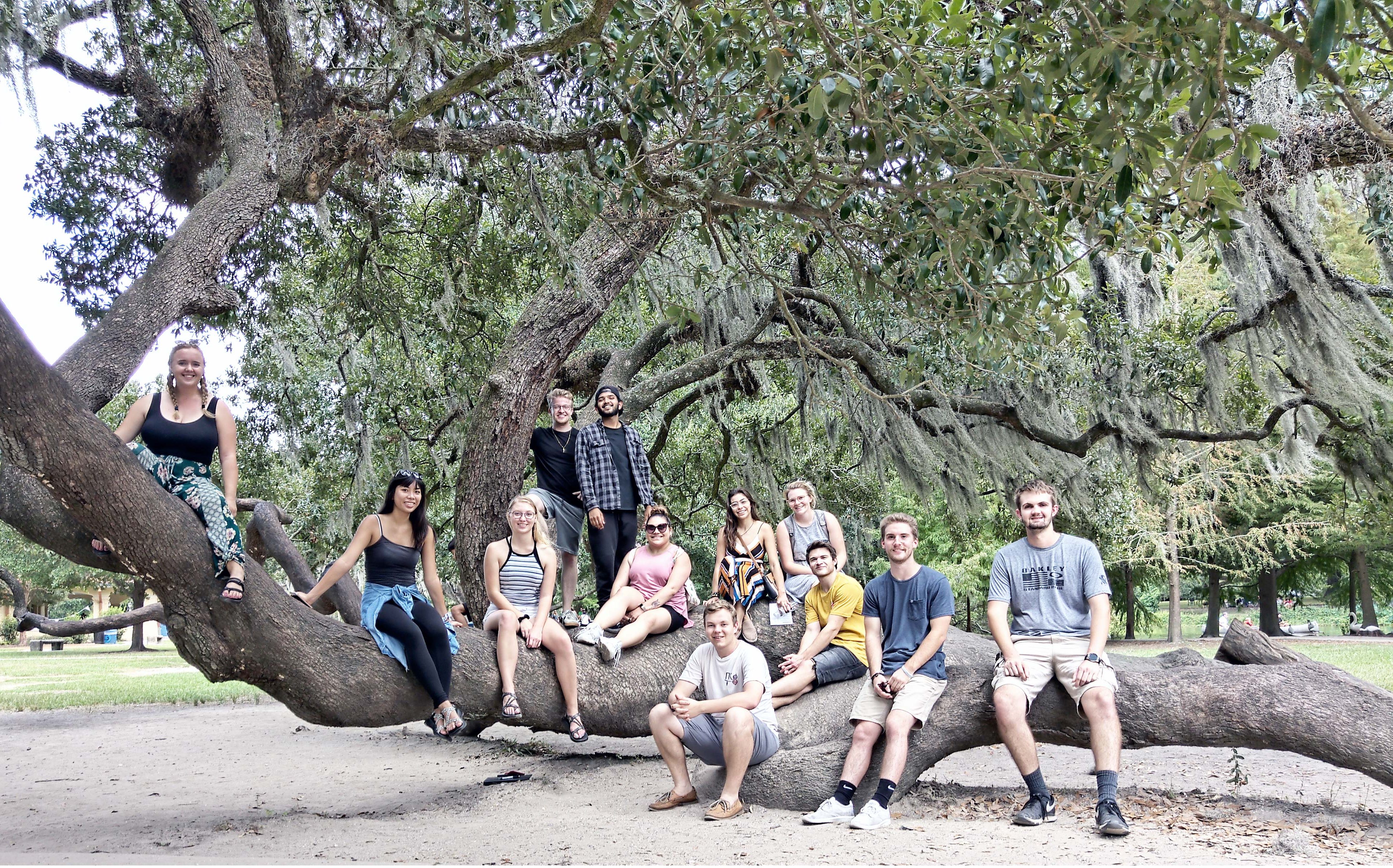 Our studio had the amazing opportunity to do a site visit to New Orleans this past week. It was informative, dynamic, and essential to the direction our studio is taking! We toured the city on Sunday to explore different areas of New Orleans. We had the chance to meet Jessica Watt with CDM Smith, Spackman Michaels and Mossop, and Dana Brown Landscape Architects for our understanding of the built environment on Monday. Tuesday we got to meet with Professors at Tulane University, grab lunch at Cafe Reconcile, and met with the owner of The Blue House. It was a rewarding trip, and we are all excited to keep sharing our findings from the trip and our designs as we move forward!
Our studio had the amazing opportunity to do a site visit to New Orleans this past week. It was informative, dynamic, and essential to the direction our studio is taking! We toured the city on Sunday to explore different areas of New Orleans. We had the chance to meet Jessica Watt with CDM Smith, Spackman Michaels and Mossop, and Dana Brown Landscape Architects for our understanding of the built environment on Monday. Tuesday we got to meet with Professors at Tulane University, grab lunch at Cafe Reconcile, and met with the owner of The Blue House. It was a rewarding trip, and we are all excited to keep sharing our findings from the trip and our designs as we move forward!
Story Starters Workshop
Create Your Own Story:
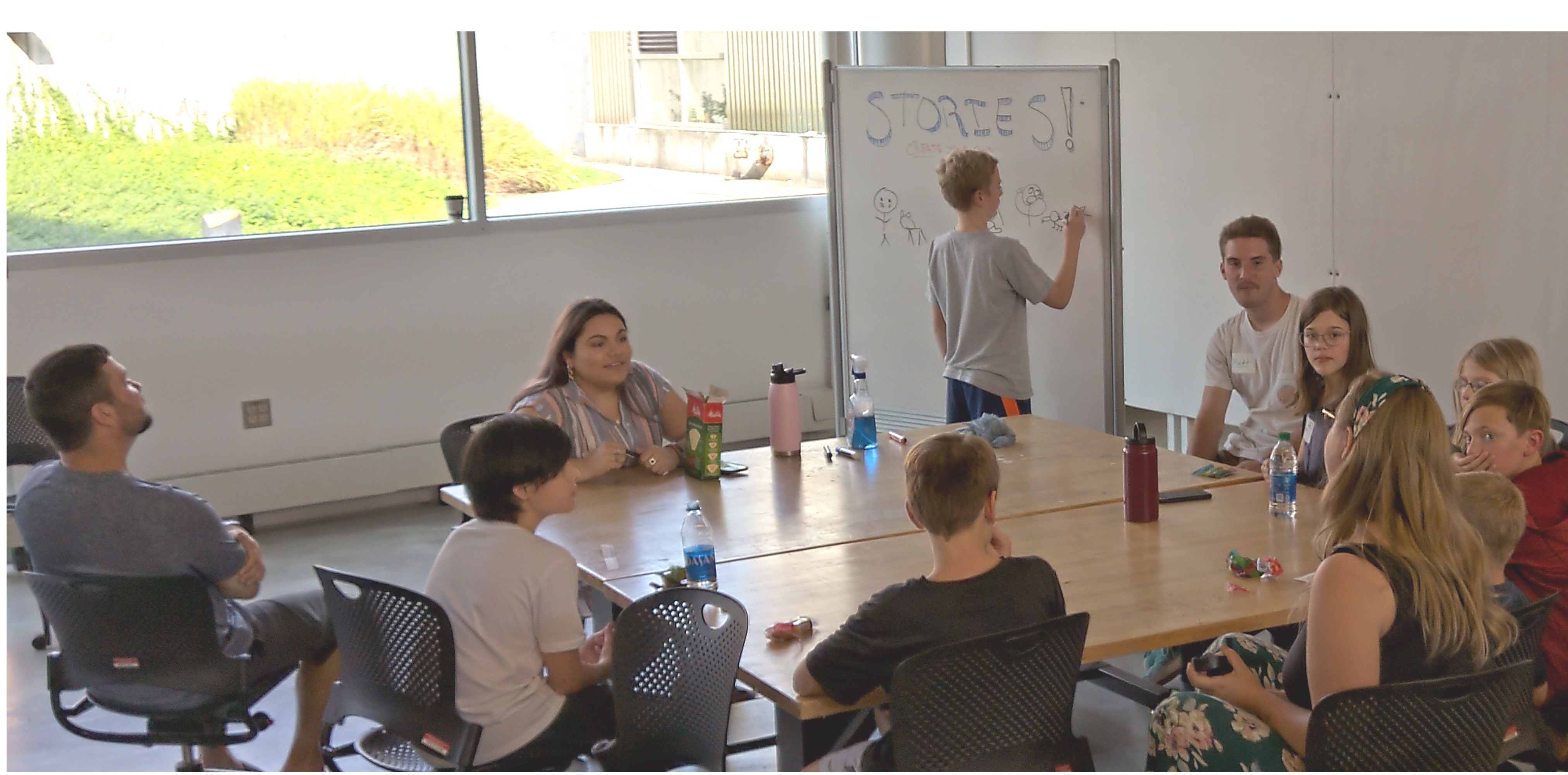 Our studio had the awesome opportunity to work with some local rockstars from Ames, IA. There were four different workshops going on: Drawing a City, Mental Mapping, Build Your Dream City, and Story Starters. In our group, we got the chance to listen to the students develop their stories based upon different prompts. The prompts were either fantastical like, “I was flying a kite when suddenly a gust of wind came and __________” or more structured ones like, “I was walking to ________ to get __________”.
Our studio had the awesome opportunity to work with some local rockstars from Ames, IA. There were four different workshops going on: Drawing a City, Mental Mapping, Build Your Dream City, and Story Starters. In our group, we got the chance to listen to the students develop their stories based upon different prompts. The prompts were either fantastical like, “I was flying a kite when suddenly a gust of wind came and __________” or more structured ones like, “I was walking to ________ to get __________”.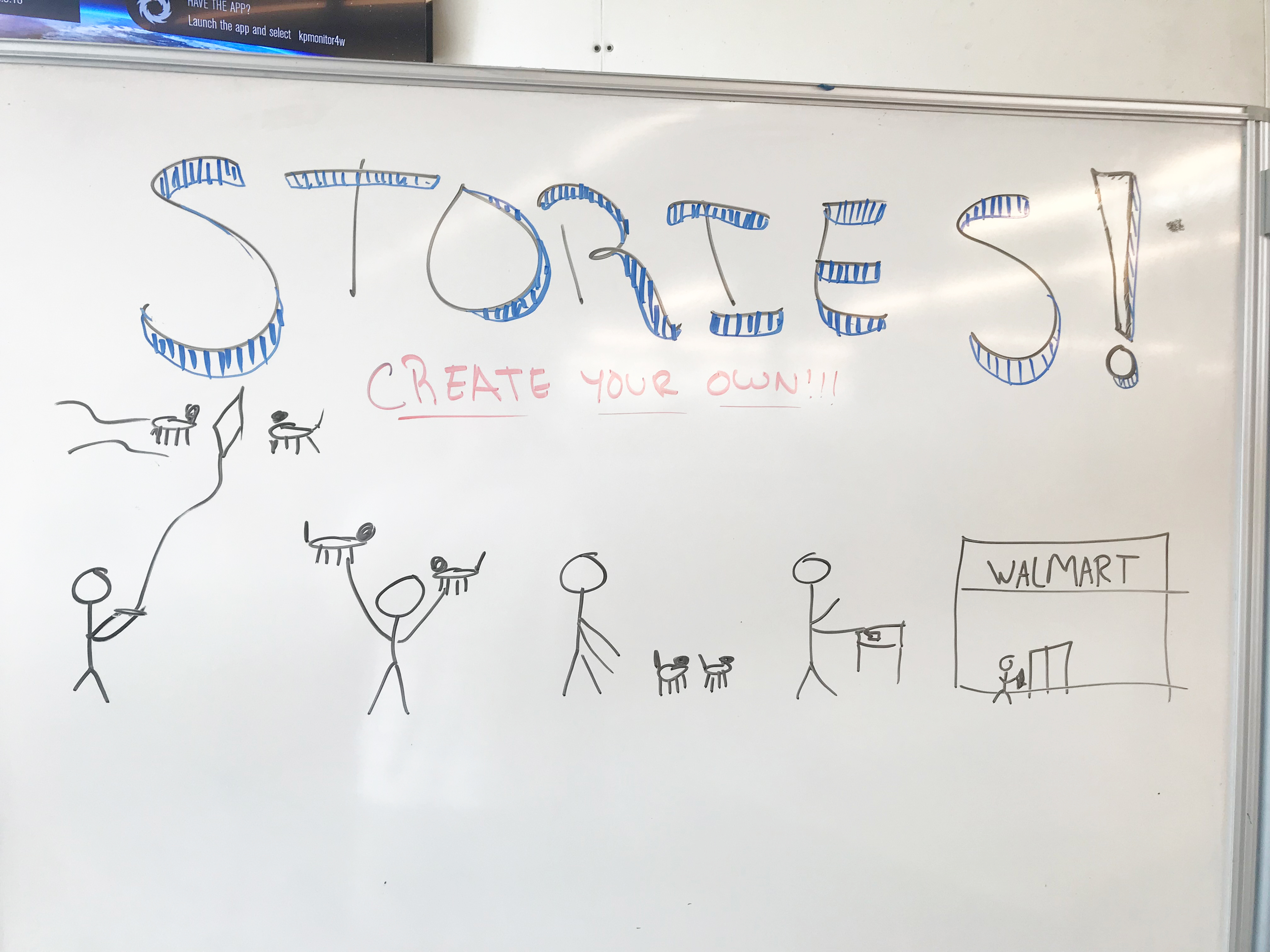
The point of the prompts was to hear what creative ideas were floating around in these 6th-8th graders’ heads, and to channel their every day experiences to better understand how they are viewing the world. Honestly, their worlds are pretty extraordinary. Though sometimes filled with random explosions, our group also took their dogs to the park, made pigs fly, and solved world hunger with fish sticks. Though the logistics remain unclear for the execution of most of their ideas, the themes of exciting surprises, care for the world, and spontaneous combustion rang through.
New York City, NY
Climate Change and Climate Resilience in New York City:

New York City realized its vulnerability to the ocean initially after Hurricane Sandy occurred in 2012. With a large part of the city along the coast, how coastal protection proceeds needed to make a change. Rising sea levels and increasing storm intensity are two of the highest concerns in responding to the climate change challenge presented to New York City. Rebuild By Design, Bay Street Corridor, The Lower Manhattan Climate Resilience Plan, are all examples outlined by New York City as responses to the looming threat of climate change.
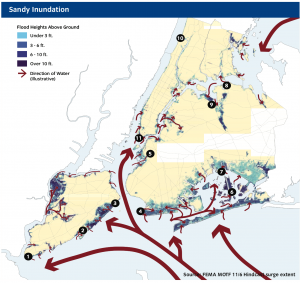
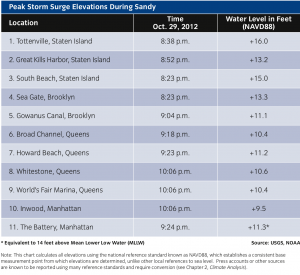
Planning a Resilient New York City:
This Interactive Map shows the several interventions in New York City, feel free to explore the map and click the links within to see more projects!
The Big U Rebuild by Design:
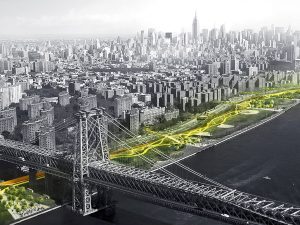
“The low-lying topography of Lower Manhattan from West 57th St down to The Battery, and up to East 42nd St is home to approximately 220,000 residents and is the core of a $500 billion business sector that influences the world’s economy. Hurricane Sandy devastated not only the Financial District, but 95,000 low-income, elderly, and disabled city residents. Infrastructure within the 10-mile perimeter was damaged or destroyed, transportation and communication were cut off, and thousands sat without power or running water. “The Big U: Rebuild By Design” is a $335 million dollar design response to the devastation Manhattan dealt with.”
The project is broken into three different phases: East River Park, Chinatown, and Battery to Brooklyn Bridge. The main themes in all of the landscapes are to have them provide a buffering zone between the disaster and the city itself. Berms are an intervention time and time again. The ten continuous mile stretch of protection for the city respond to individual neighborhood typology as well as community-desired amenities. Though the design does capture the community ideals, nowhere in the design has the input of children been involved. Involving the youth of NYC could allow them to help shape the legacy and story NYC is creating right now.

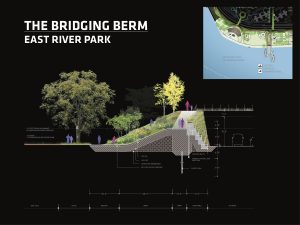
The Bridging Berm provides vertical protection for the Lower East Side from future storm surge and rising sea levels. The Berm also offers elevated routes into the park, with many unprogrammed spots for resting, socializing, and enjoying views of the park and river. Both berms and bridges are wide and planted with a diverse selection of salt-tolerant trees, shrubs, and perennials, providing a resilient urban habitat. The video below expands upon how the flood protection for the city is evolving and expanding to make New York City less vulnerable to superstorms and more resilient to climate change. It’s a bit of a long watch (45 minutes) but the information is great on understanding how we can work with communities to protect themselves from the changing climate.
http://www.rebuildbydesign.org/resources/videos/extending-manhattan-for-flood-protection
The Bay Street Corridor:

The Bay Street Corridor a series of land use actions including zoning map amendments, zoning text amendments and a disposition of City-owned property to support the implementation of the Bay Street Corridor Neighborhood Plan. As a neighborhood, it will be more resilient to climate change as well as a more resilient community base with affordable housing and mixed-use development.
Lower Manhattan Climate Resilience Study Excerpt:
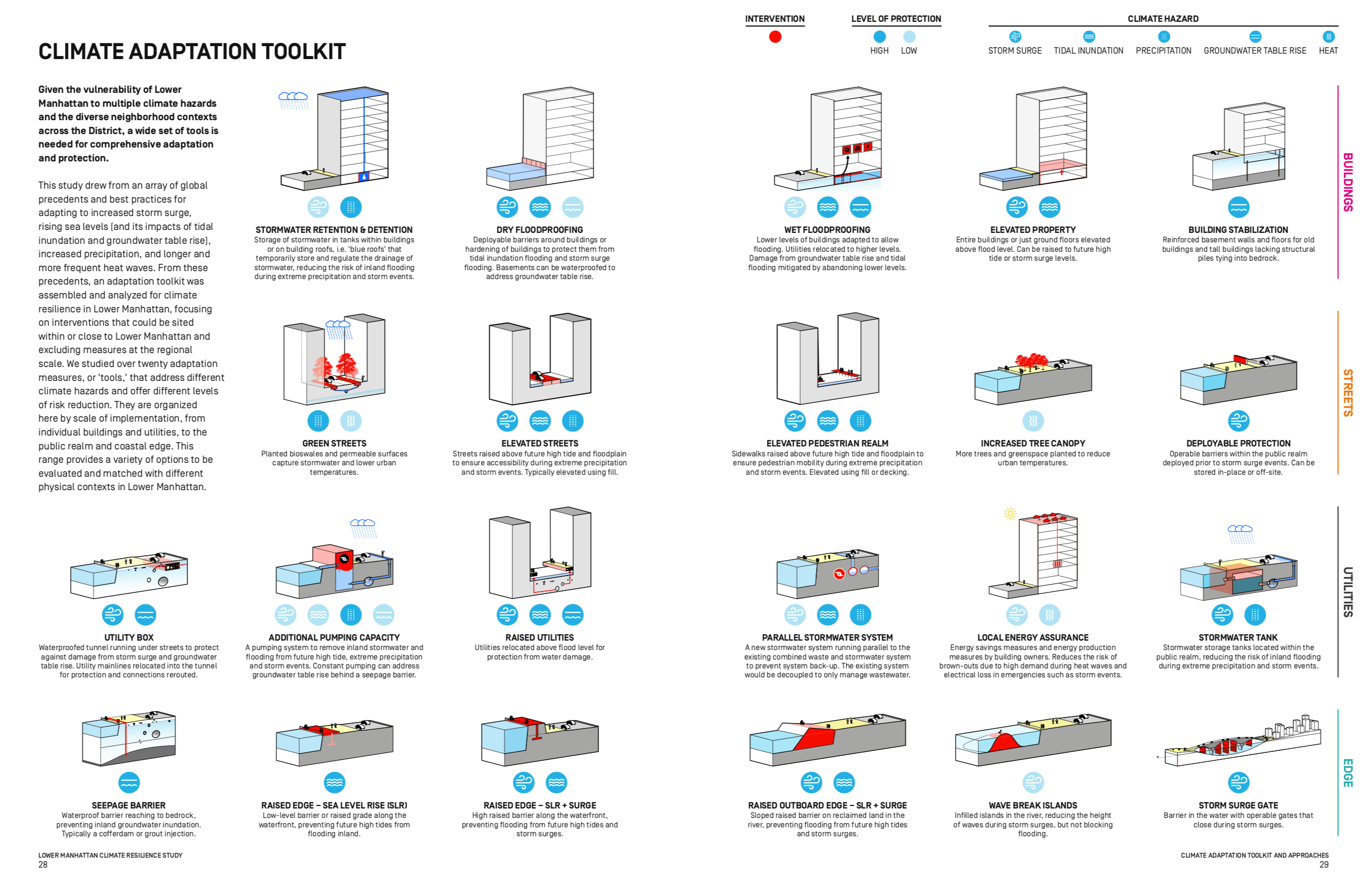
In March, 2019, Lower Manhattan released their “Climate Resilience Study” that outlines an overview of Manhattan, a climate risk assessment, a climate adaptation toolkit, and suggests different approaches throughout the city to mitigate the impacts of climate change. This page outlines the different mitigations based upon buildings, streets, utilities, and the edge of the city meeting the water. They are excellent strategies to implement in a city vulnerable to coastal damage from climate change.
Video for Climate-Smart Cities:
Child Friendly City: New York City, NY
Breakdown:

The population of New York City, NY was 8.63 million people in 2017. 73% of New York City’s low-income areas do not meet the legislature requiring 2.5 acres of parkland per 1,000 residents. We know that lack of access to green space has devastating, enduring impacts from childhood to adulthood. New York City is implementing resilient, inclusive parks as a step to being a child-friendly city.
![]()
All age ranges are being involved in the park development in New York City. I was able to get in contact with The Trust for Public Land to discuss the parks they have implemented in the city. Their focus in NYC has been both about making the city more child-friendly and more climate-resilient. With 27 different park interventions, The Trust for Public Land has been working since 1972, to protect more than 3.3 million acres and completed more than 5,400 park and conservation projects.
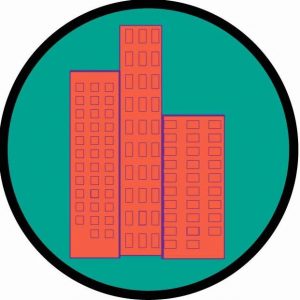 The most replicable child-friendly interventions I have found have been either working in parking lots to change the space from traffic centered to play centered or working with schoolyards to create parks that are open later than the schools are like PS 111M in Hell’s Kitchen, New York City, NY.
The most replicable child-friendly interventions I have found have been either working in parking lots to change the space from traffic centered to play centered or working with schoolyards to create parks that are open later than the schools are like PS 111M in Hell’s Kitchen, New York City, NY.
Interactive Map of Child Friendly Interventions in New York City:
Figure Ground Drawing of New York City:

This image shows the stark contrast between building space and street space. There are three different parks in this image as well, but the streetscape dominating the landscape is very apparent. The area in red is a park intervention done in 2004 called Teardrop park. Including park spaces in a city spanned so expansively by streets in crucial to having a child friendly city. Another mitigation to handle the streets would be to adapt several to pedestrian friendly walkways or to create a sky-walk structure the way other parts of New York City already have.
Teardrop Park, New York City, NY
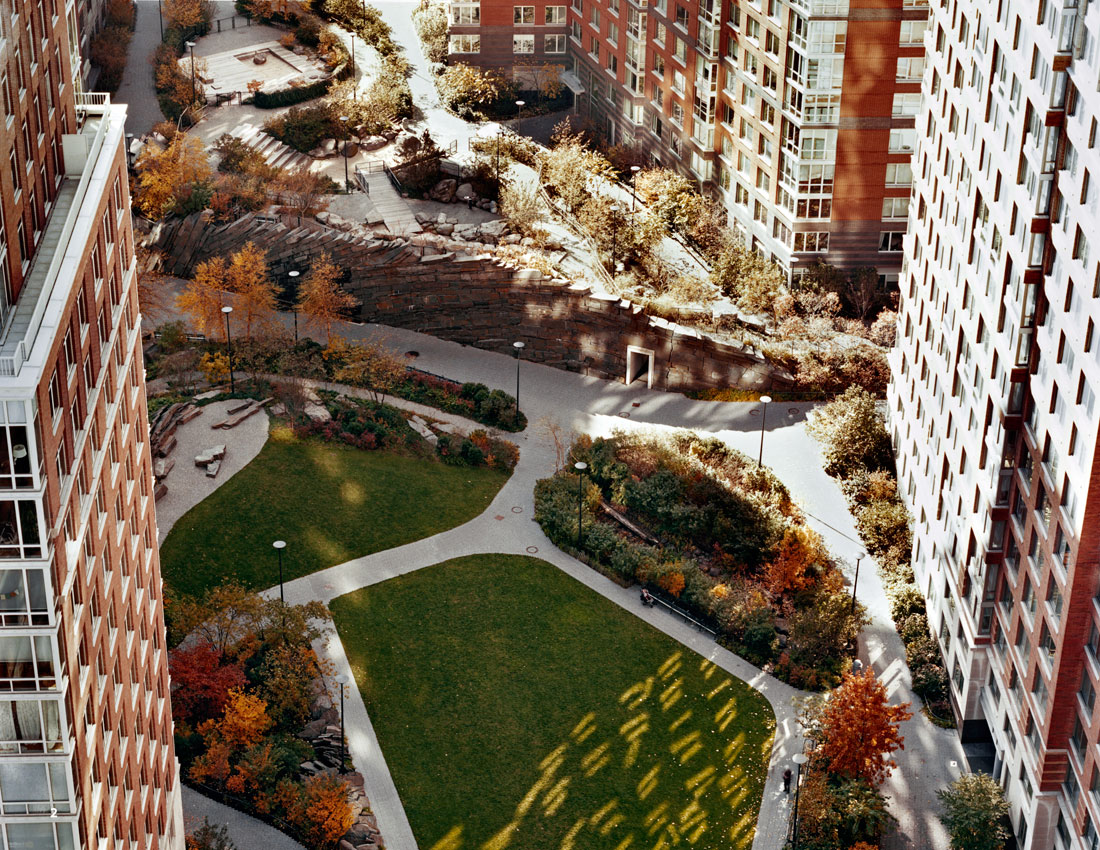
Teardrop Park was a design done by Michael Van Valkenburg Associates. I included it in the child-friendly city post because it provides a space for children to escape from the streetscape shown above. Bringing the more inventive play and natural textures into the backdrop of New York City is hugely important. It was designed to refer to the Hudson River Valley as it once was. There is little Climate Resilience present in this design, which could have really been a spectacular addition, but Teardrop park is certainly a beautiful place to visit and. a fantastical place for kids to play.
PS 111M, Hell’s Kitchen, New York City NY
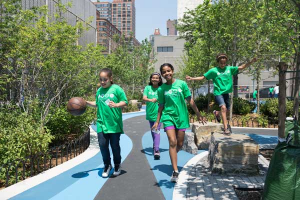
According to the Trust for Public Land “The site is open to the public after school and during school breaks until dusk, seven days a week, as part of the Schoolyards to Playgrounds Program. This one-acre playground captures over 700,000 gallons of stormwater per year.” This park intervention was an excellent opportunity for children to become more involved in their place of education, learn about stormwater management, and it provides a safe place for them to be off the streets. It was completed.
PS 261K Boerum Hill, Brooklyn, NY
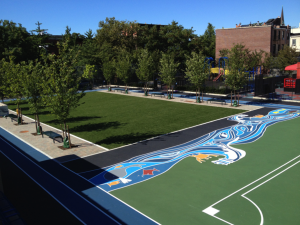
Located in Boerum Hill, Brooklyn, this playground includes artificial turf field, running track, rain garden, permeable pavers, trees, gazebo with rain barrels, outdoor classroom in council ring, planter boxes, storage shed with green roof, benches, basketball court, kickball area, color seal, painted games, stage, recycling center and water fountain. The green infrastructure elements capture 500,000 gallons of stormwater each year.
Human Context:
This video gave some insight into the lives of some of the people living in New York. Starting at 8:28 we get a glimpse into children in the context of the city. We see a mother worrying about her child and a child worrying about his future. The whole video is incredibly powerful, and the series humanizes the city of New York in a way that makes the concerns and everyday life occurring there more accessible.
World Car Free Day
World Car Free Day is coming up! On September 22 every year, cities across the globe ban traffic from major roadways to experience the city with less private traffic and explore how the urban landscape shifts when it becomes more pedestrian centered than automobile centered. This month Car Free Day is going to be celebrated by 2,000 cities in over 46 countries! World Car Free Day has been a catalyst to cities in the past realizing how charming their cities can be without the incessant traffic noise. Private traffic is limited to main streets, and emergency or maintenance vehicles still have all the access they need. This initiative is really exciting because it gives us a glimpse of a city a child wouldn’t have to look both ways before chasing their ball into the street. We invite you to join in this September 22, 2019, to your do own Car Free Day!
About Us!
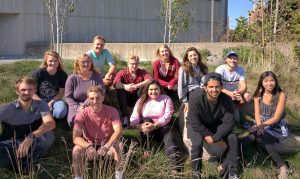
We are a group of Landscape Architecture students studying at Iowa State University. Why would Landscape Architecture students build this super cool website you ask? Well, the answer is simple: we care! As a field, Landscape Architecture is all about helping improve the lives and functions of people, spaces, and cities. Right now, our studio focus is on how we can make New Orleans a child-friendly city. This website is a tool and community meant for you. We’ve linked resources, events, and research here for you to explore and enjoy.